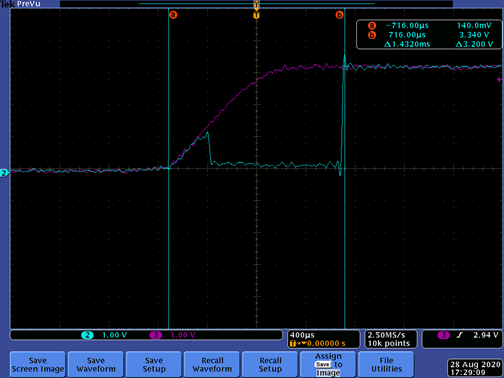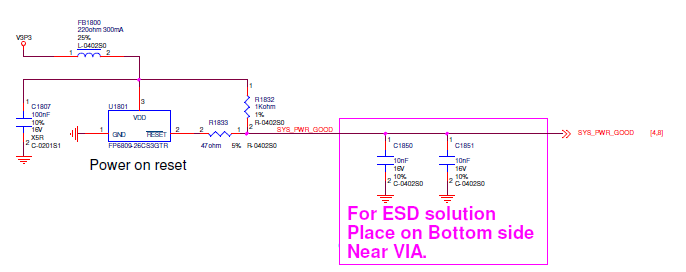Other Parts Discussed in Thread: TPS3840, , TLV809E, TPS3870-Q1
Hi team,
In my customer's design, there are 5% TPS3809L30DBVR components can not work normally with correct delay time.
In our datasheet, the delay time should meet the spec 120~280 ms.
Below waveform is customer's failure waveform for your reference.
CH3: VDD
CH2: /RESET
And I also attach customer's circuit for your double check.
Thanks



